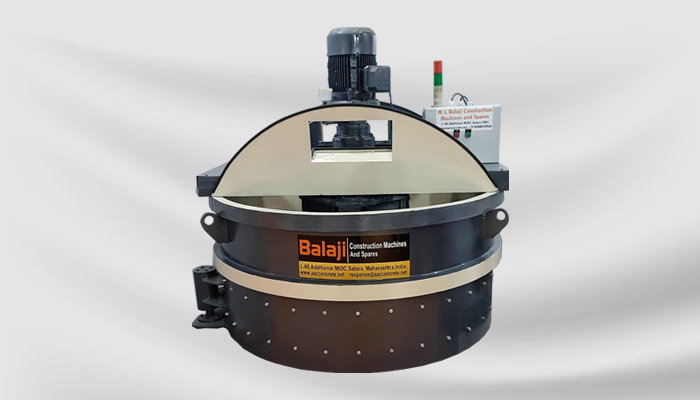| Sr |
Aspect |
Concrete Planetary Mixer |
Concrete Pan Type Mixer |
| 1 |
Mixing Mechanism |
Dual motion: blades rotate and revolve around a central axis, ensuring complete coverage of the mixing area. |
Blades rotate within a stationary pan, mixing concrete in a single motion. |
| 2 |
Mixing Efficiency |
Very high efficiency due to planetary motion covering all parts of the batch. |
High efficiency, but slightly less than planetary mixers due to a single motion. |
| 3 |
Mixing Homogeneity |
Excellent mixing homogeneity, especially for complex mixes such as SCC and UHPC. |
Provides good homogeneity but may require slightly more mixing time to achieve similar results as a planetary mixer. |
| 4 |
Mixing Speed |
Faster mixing due to dual-motion design, typically reduces mixing time by 10-15% compared to pan mixers. |
Slightly slower; typically takes 5-10 minutes per batch depending on mix type. |
| 5 |
Material Handling Capacity |
Suitable for all concrete types, including fiber-reinforced and high-strength concrete. |
Works well with standard concrete mixes, but may not be as efficient for fiber-reinforced or ultra-high-strength concrete. |
| 6 |
Mixing Time |
2 to 5 minutes per batch depending on material and mixer capacity. |
5 to 8 minutes per batch for standard mixes. |
| 7 |
Blade Design |
Multiple high-efficiency blades rotating and revolving, ensuring uniform mixing with minimal dead zones. |
Single set of rotating blades scraping the pan surface, less complex than planetary mixers. |
| 8 |
Mixing Capacity |
Ranges from 0.5 to 3 cubic meters per batch. |
Typically ranges from 100 to 1000 liters per batch. |
| 9 |
Blade Speed |
10 to 40 rpm depending on the phase of mixing. |
20 to 40 rpm depending on the mixer model. |
| 10 |
Energy Consumption |
More energy-efficient for complex and large-volume mixing tasks due to optimized motion. |
Slightly higher energy consumption for equivalent batch sizes due to longer mixing time. |
| 11 |
Motor Power |
15 to 150 kW depending on size and model. |
5 to 30 kW depending on size and application. |
| 12 |
Maintenance Requirements |
Moderate: requires regular inspection and lubrication, but durable over long periods. |
Low: fewer moving parts result in easier maintenance, although blades may wear quicker. |
| 13 |
Application Versatility |
Highly versatile for high-performance concrete, precast, refractory materials, and SCC. |
Primarily suited for regular concrete production and masonry mixes. |
| 14 |
Structural Durability |
Built with high-grade steel, designed for heavy-duty industrial use, resistant to wear and tear. |
Also highly durable but less robust for extreme applications like ultra-high-performance concrete. |
| 15 |
Mixing Intensity |
High-intensity mixing, especially useful for dry and fiber-reinforced mixes. |
Moderate mixing intensity, better for semi-dry and standard mixes. |
| 16 |
Weight |
1.5 to 15 tons depending on the model. |
0.5 to 2 tons, typically lighter than planetary mixers. |
| 17 |
Space Requirements |
Requires more space due to complex mechanical design. |
Compact and space-efficient, ideal for smaller sites. |
| 18 |
Discharge System |
Usually features a hydraulic or pneumatic discharge system for quick release. |
Features bottom or side discharge, typically manual or hydraulic. |
| 19 |
Cost |
Generally more expensive due to the complex design and high-efficiency output. |
More affordable, making it suitable for small to medium-sized operations. |
| 20 |
Production Consistency |
Ensures highly consistent production quality, even with large and complex batches. |
Provides good consistency, but may vary slightly in larger or more complex batches. |


